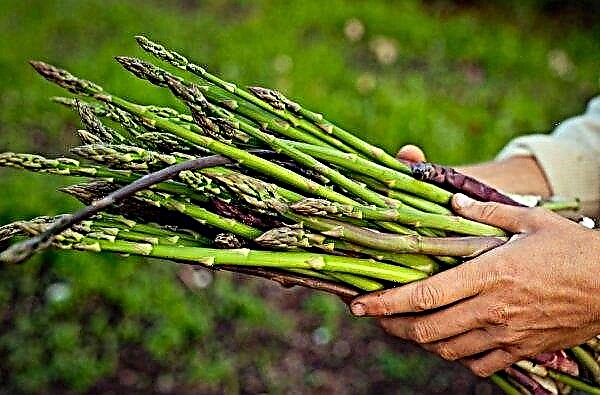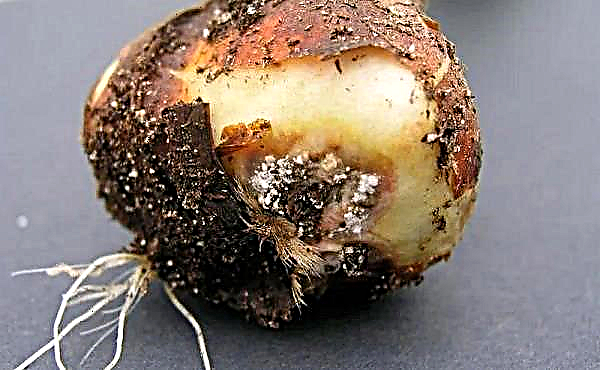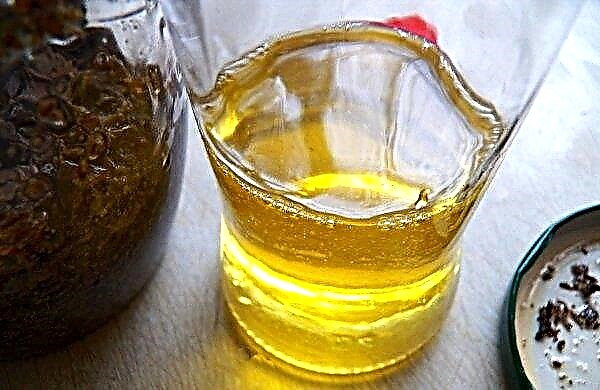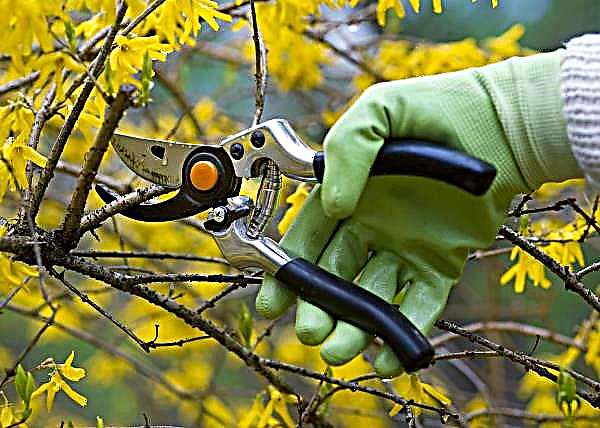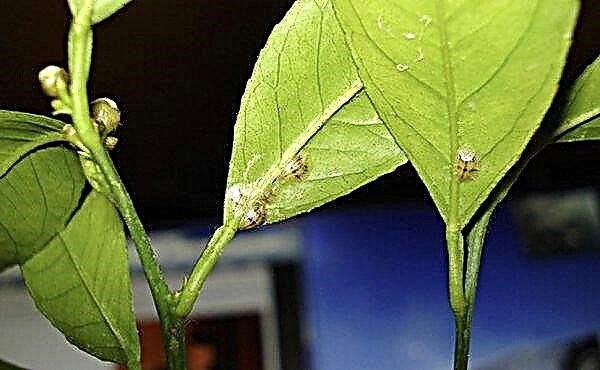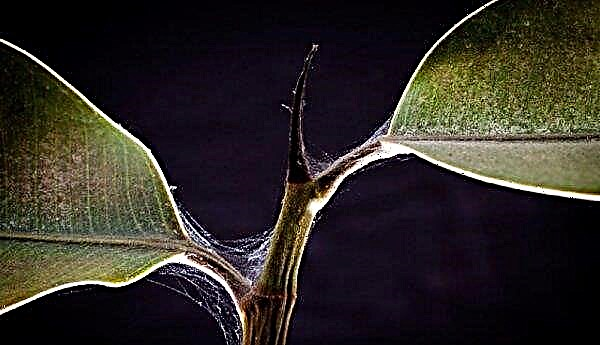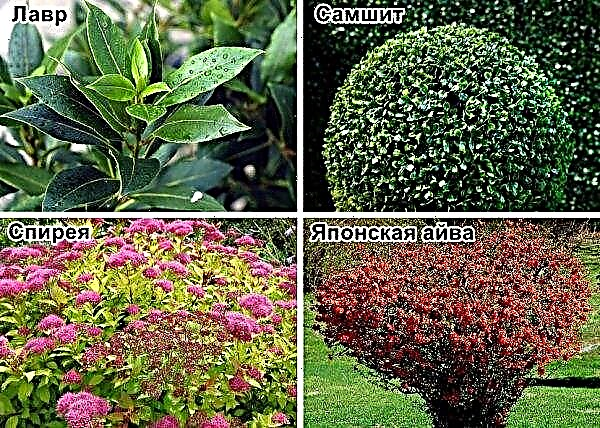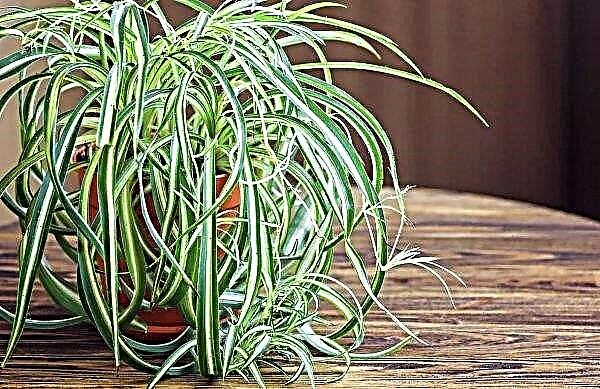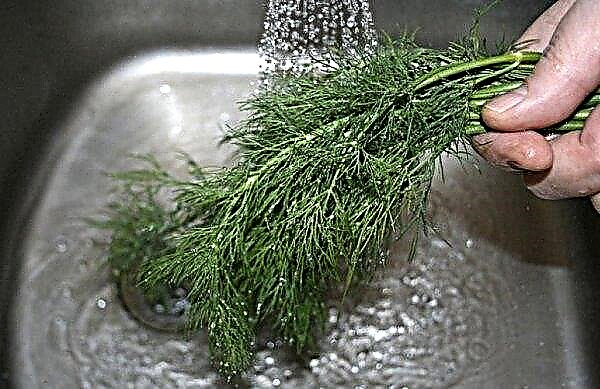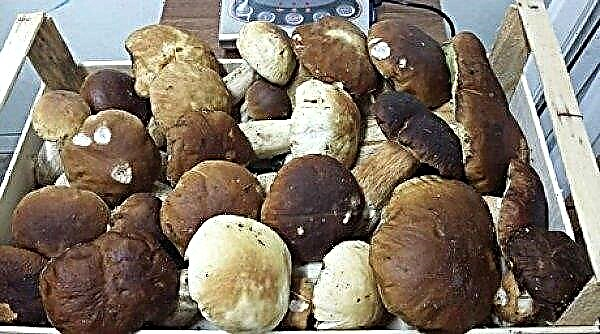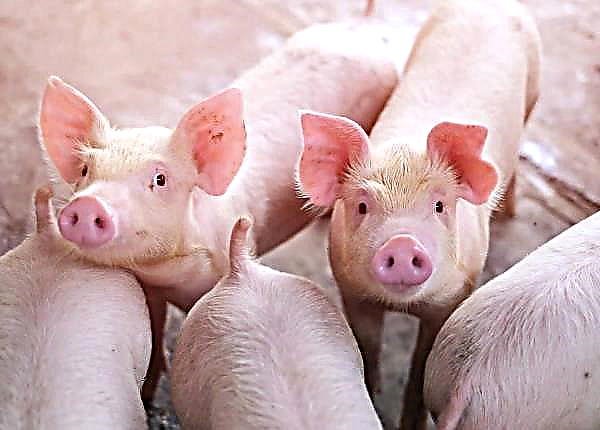When choosing onion sets for planting on their own personal plot, many gardeners began to prefer varieties and hybrids of the Dutch selection, since they are distinguished by high endurance and unpretentiousness, and, in addition, have excellent taste characteristics. These, as well as many other advantages are inherent, in particular, the Cupido F1 hybrid, which will be discussed in this review.
Grade description
Cupid, as you know, in ancient Roman mythology is a god of love, striking people with its magic arrows. In the original language, the name of this deity is Cupido, and it was the Dutch breeders of Triumfus Onion Products who awarded their new onion hybrid.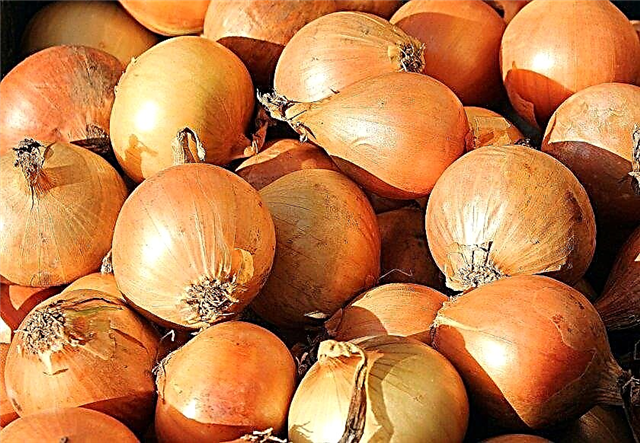
The distinctive properties of Cupido F1 onions are:
| Head mass, g | 110–150 |
| Husk color | Light brown golden |
| Peel structure | Thin, but keeps its shape well and does not show a tendency to exfoliate |
| Bulb structure | Dense, elastic |
| Bulb shape | Rounded, slightly elongated |
| Pulp color | Creamy |
| Average pen length, cm | 30 |
| Root system | Powerful enough |
| Taste | Medium spicy, very suitable for salads, can be used in baby food |
Did you know? Onion as a vegetable and as the name of the weapon with which Cupid condemned his victims to the love torment only sounds the same in Russian, among the Dutch, like the English, these are different words (in the Dutch language, respectively, “uien” and “boog ", And in English -" onion "and" bow "). Thus, there is really no quibble and double meaning in the name of the hybrid.
Advantages
- Like all samples of Dutch selection vegetables, Cupido F1 onion has a lot of undeniable advantages, among which it is worth noting separately:
- high quality of seed material (lack of need for pre-sowing preparatory work with seeds);
- ultra-early ripening;
- presentable appearance and dense bulb structure;
- very good keeping quality (very rare for early vegetables);
- good transportability;
- high percentage of maturation (93–99%);
- excellent yield indicators;
- excellent taste characteristics;
- unpretentiousness, lack of difficulties in growing;
- drought tolerance;
- the possibility of growing both in open ground and in greenhouses;
- suitability for both winter and spring planting;
- universal purpose of the fruit;
- lack of tendency to shoot;
- resistance to many diseases, high immunity against pests.
 To the advantages listed above, it is worth adding that the onion set of this hybrid is not very expensive and almost does not differ in price from domestic analogues of this vegetable, including those with more modest characteristics.
To the advantages listed above, it is worth adding that the onion set of this hybrid is not very expensive and almost does not differ in price from domestic analogues of this vegetable, including those with more modest characteristics.Did you know? If after a bite of a wasp or a bee, you immediately rub a stung place with a cut bulb, the pain will recede, and the swelling will decrease.
Disadvantages
It is difficult to talk about the shortcomings of the Dutch hybrid. Some sources indicate that Cupido F1 is not resistant to cold, however, this information does not find confirmation from gardeners. On the contrary, the hybrid tolerates winter planting perfectly, and in spring they try to plant it as early as possible, which is quite typical for varieties with a short ripening period. However, when grown in regions north of the middle band of the European part of Russia, this hybrid really needs protection from the cold. Sometimes you can find a mention that the sharp changes in spring temperatures are harmful to the plant.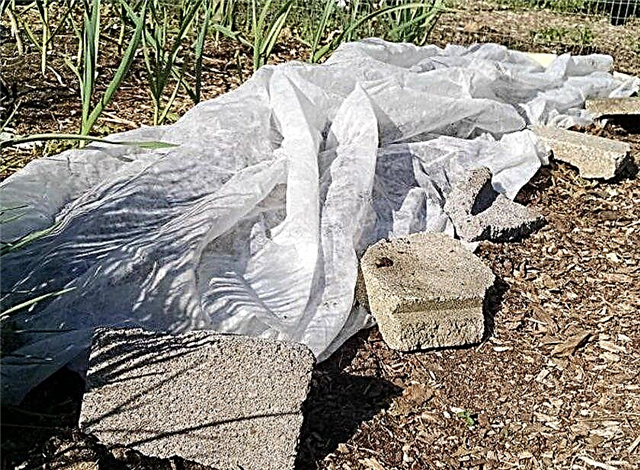 Covering the onion with a film at the initial stages of growth When evaluating the Cupido F1 productivity, it is fair to mention that, like all heterotic hybrids, the above advantages, this onion shows exclusively in the first generation, therefore to independently prepare planting material from the collected seeds of this onion will not work - such plants lose the quality of the parent form.
Covering the onion with a film at the initial stages of growth When evaluating the Cupido F1 productivity, it is fair to mention that, like all heterotic hybrids, the above advantages, this onion shows exclusively in the first generation, therefore to independently prepare planting material from the collected seeds of this onion will not work - such plants lose the quality of the parent form.
Hybrids are always more productive than varietal forms, they grow better, mature faster, are less dependent on natural conditions, have higher immunity, however, all these qualities are lost in the second generation, gradually returning to the original parent material. For industrial production, this feature can be considered a drawback, since the farmer will be forced to bear the costs of acquiring seeds or seeds per year.
Important! The “F1” icon next to the name of the variety indicates the first generation of a heterosis hybrid — a plant that is in many ways superior to the variety from which it is derived. For example, an onion hybrid can be obtained by crossing the mother plants of two plants - one grown from seed and the second obtained from seeds.
Characterization and yield of onions
From the entire line of onion varieties and hybrids bred in the Netherlands, Cupido F1 is the earliest. From the onset of seedlings to the complete formation of the head, an average of 75 to 82 days passes. The yield of the hybrid is quite high: from 1 square meter you can collect 4 or more kilograms of onions. Ideally suited for cultivation in the middle lane of the European part of the Russian Federation, as well as in more southern areas. It is widely cultivated throughout Ukraine.  It is appreciated for its unpretentiousness, high viability, and quick adaptability to different climatic conditions. Cupido F1 can be used in all culinary directions, where only onions can be present. Thanks to its soft and unobtrusive sharpness, it is very convenient to put it in salads, add to soups, main dishes, snacks and preparations.
It is appreciated for its unpretentiousness, high viability, and quick adaptability to different climatic conditions. Cupido F1 can be used in all culinary directions, where only onions can be present. Thanks to its soft and unobtrusive sharpness, it is very convenient to put it in salads, add to soups, main dishes, snacks and preparations.
Selection of planting material
The manufacturer of onion sets Cupid F1 performs a thorough selection and testing of its products before proceeding with its launch on the market. In the original packaging of 0.5 kg, such a bow always has the same head sizes - from 1.0 to 1.5 cm.
Important! The indicated range in the size of the seed set was not accidental: the set of seeds larger than 15 mm in diameter has a tendency to shoot, and with too small onions the planting process becomes very time-consuming and inconvenient.
Proof of the high quality of planting material is:
- absolute dryness (the husk should characteristically rustle upon contact of the set with each other or between fingers);
- density;
- golden straw color;
- characteristic elongated shape with a thin "nose";
- the absence of any signs of rot, fungus (mold) or other damage;
- pleasant onion smell (not musty).
 Please note that if you purchase seeds of sevillid cupid at specialized points, then you can’t check it, since certified goods should be checked in the seed production workshop. In addition, when choosing planting material, you should pay attention to the date of packaging. Usually, the sale of Cupid for spring planting begins in February, and such a product (sevok or chernushka) has excellent germination. But sometimes, sellers try to sell product deposits of past years, in this case, the landing results may be slightly worse.
Please note that if you purchase seeds of sevillid cupid at specialized points, then you can’t check it, since certified goods should be checked in the seed production workshop. In addition, when choosing planting material, you should pay attention to the date of packaging. Usually, the sale of Cupid for spring planting begins in February, and such a product (sevok or chernushka) has excellent germination. But sometimes, sellers try to sell product deposits of past years, in this case, the landing results may be slightly worse.Growing conditions
Like any onion, Cupido F1 is a two-year-old plant: in the first year, sowing is grown from seeds, and already, in the next year, turnip grows. Hybrid can be grown both in open ground and in greenhouses. The culture is unpretentious in care, resistant to pests. Cupido F1 is equally well suited both for industrial production and for growing in a small summer cottage for personal consumption. You can plant onions of this variety in the fall, in this case, the crop can be obtained even earlier.
Did you know? Judging by official statistics, the biggest lovers of onions are Libyans. Each year, every resident of this country eats more than 33 kg of turnip (for comparison, the French, who invented the famous onion soup, are content with “miserable” 5.5 kg of this healthy vegetable a year).
Winter planting should be done in such a way that before the onset of frost, the plant forms the root system, but at the same time, does not release a feather, otherwise the onion will freeze. The optimal time for work, depending on the region, is from the end of October to the second half of November (approximately 3 weeks before the start of frost). To prevent germination and freezing in winter, a deeper planting helps - up to 10 cm.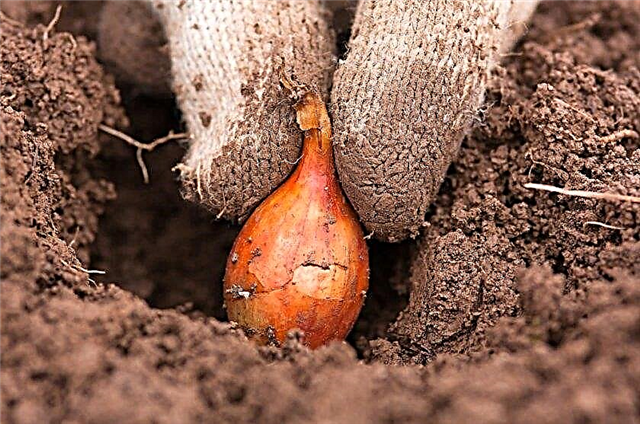 In addition, the top of the bed needs to be covered with a dense layer of mulch - straw, peat or other organic matter. Despite the lack of a hybrid's tendency to shoot, such a problem can occur if the plant freezes or undergoes extreme temperature changes, so spring planting should be carried out when the soil has completely warmed up.
In addition, the top of the bed needs to be covered with a dense layer of mulch - straw, peat or other organic matter. Despite the lack of a hybrid's tendency to shoot, such a problem can occur if the plant freezes or undergoes extreme temperature changes, so spring planting should be carried out when the soil has completely warmed up.
Otherwise, the conditions for growing Cupido F1 are standard:
| Optimum temperature, ° С | +12…+16 |
| The temperature of seed germination, ° C | +4…+5 |
| Frost resistance of a mature bulb, ° C | -6…-7 |
| Lighting requirements | Photophilous |
| Soil fertility requirements | High |
| Watering requirements | Drought-resistant, watering needs the first and second third of the growing season, does not tolerate stagnation of water |
Growing from seeds for seedlings at home
There are three ways to grow onions:
- through seedlings from seeds;
- through sowing seeds in open ground;
- Sevkom.
Important! Prior to seed packing, Dutch producers carry out a thorough germination test and perform all pre-sowing preparatory work. When trying to "improve" professionally processed seeds, an inexperienced gardener can only significantly reduce their viability.
Preparing seeds for planting
Traditionally, the seeds of any vegetables must be prepared before planting. These activities may include all or several of the following steps:
- germination test;
- soaking;
- disinfection;
- germination;
- growth stimulation;
- bubbling;
- panning.
 However, with respect to the branded seeds of the Cupido F1 hybrid, you do not need to do this. Plant seeds from Holland need dry
However, with respect to the branded seeds of the Cupido F1 hybrid, you do not need to do this. Plant seeds from Holland need drySeed planting process
You can grow onion seedlings in several types of containers:
- in one-time cups;
- in boxes or containers with low sides;
- in special cassettes for seedlings;
- in the so-called "snails" - special home-made constructions made of a pot and a spiral tape made of a transparent and waterproof material inserted into it, on which a layer of soil and seeds of future seedlings are previously laid out.
Since the seeds of the onions are very small, it is inconvenient and irrational to plant them in separate cups, but the “snail” as one of the most convenient, from the point of view of using free space and future transplant, life hack, it is worth paying special attention.
Video: planting onion seeds using the “snail” method
If transplanting seedlings is carried out in a container (the most common way), this is done like this:
- The container is filled with about 2/3 of the nutrient soil mixture.
- The soil is abundantly watered with warm water.
- When the water is absorbed and slightly dried, in the container using a wooden stick for sushi or another similar tool, make shallow (up to 1.5 cm) grooves with a row spacing of about 5 cm.
- Onion seeds are laid along the entire length of the grooves.
- Sprinkle grooves with earth and no longer watered.
- The container is covered with a film and put in a warm (+ 20 ... + 22 ° C) place until emergence.
- When the onion sprouts, the film is removed.
Video: sowing onions for seedlings
Seedling care
Care of seedlings consists mainly in controlling the moisture of the soil, and seedlings should not be watered too actively - it is enough that the soil simply does not dry out. Watering is best done with a spray gun, so as not to deepen the seedlings and not damage the delicate roots. After each watering, the soil can be slightly loosened, but this should be done very carefully, affecting only the topmost layer of soil.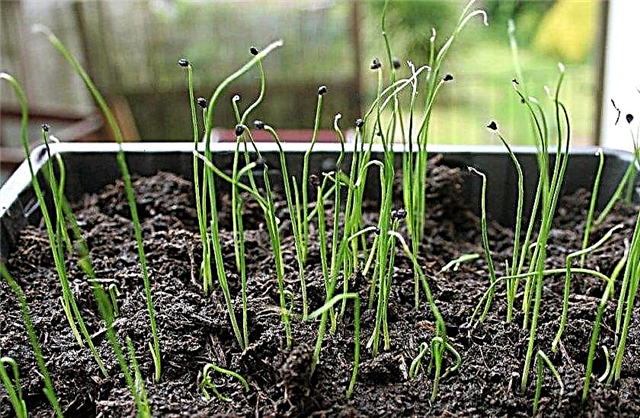 No fertilizers are needed at the stage of growing seedlings onions, they can burn the roots and destroy the plant. Before planting seedlings in open ground, it is important to harden it. To do this, in 7-10 days, containers begin to take out into the open air, gradually increasing the time of such "walking". By the time of transplantation, the seedlings should have “experience” in the cold during the day.
No fertilizers are needed at the stage of growing seedlings onions, they can burn the roots and destroy the plant. Before planting seedlings in open ground, it is important to harden it. To do this, in 7-10 days, containers begin to take out into the open air, gradually increasing the time of such "walking". By the time of transplantation, the seedlings should have “experience” in the cold during the day.
Did you know? The vegetable symbol of Wales is leek, and its colors - white and green - have been used by archers of this principality since the 14th century. According to legend, a long time ago, during a battle on the onion field with the Saxons, the Welsh, on the orders of David Menevius (patron of Wales), decorated their helmets with leek petals, having the opportunity to easily distinguish their own from strangers, and thereby having won.
Transplanting seedlings into the ground
Planting seedlings in open ground is carried out after the onset of steady heat so that return frosts do not destroy young plants. In the southern regions, for example, in Ukraine, this can be done in early May (although, of course, you should be guided by weather conditions), residents of the middle lane should wait another 2-3 weeks. Before planting seedlings, the selected bed must be cleaned from weeds, other organic residues and debris, dig, loosen and fertilize
Before planting seedlings, the selected bed must be cleaned from weeds, other organic residues and debris, dig, loosen and fertilize
To do this, you can use compost, humus or Kurnik (granulated chicken droppings), as well as mineral fertilizers, for example, based on 1 sq.m:
- humus - 2-3 kg;
- potassium salt - 15 g;
- ammonium nitrate - 10-12 g;
- superphosphate - 20-30 g.
Important! Fresh manure in the ground before planting onions can not be made. In this fertilizer, weed seeds are abundant, with which the culture does not tolerate neighborhood.
Then marking the beds is carried out. The recommended Cupido F1 planting pattern is 20 x 10 cm. According to the planned pattern, you should dig holes up to 5-6 cm deep, pour about 0.5 liters of slightly warmed water on the bottom of each (you can add a preparation to stimulate growth, for example, "Epin" or "Kornevin") and be sure to wait until the water is absorbed.
A plant carefully removed from the container or “snail” is placed in each hole together with an earthen lump, they add the necessary amount of earth from all sides, carefully rammed so that there are no air chambers inside, and, if desired, mulch.
Video: planting seedlings in open ground
Rules for growing from seed in open ground
Another way to cultivate the Cupido F1 hybrid is to cultivate a seed set. In this case, the seed is planted directly in the open ground and gives almost one hundred percent germination.
Important! Ideal soil for Cupido F1 is sandstone or loam.
Site selection and soil preparation
The Dutch hybrid can grow on any type of soil. It is important for culture that the soil be nutritious and fertile (high humus content), and also have a neutral or slightly alkaline reaction (pH level in the range of 6.6–7.4). It is better that the soil is sufficiently loose and has good moisture permeability. The bed is prepared for planting the seedlings in the same way as for seedlings. The place for the beds must be open and well lit, however, have reliable protection from strong gusts of wind. Counting on a good harvest of onions, when choosing a place for planting it is necessary to take into account the standard rules of crop rotation, since some plants are bad predecessors for this crop, while others, on the contrary, contribute to its intensive development.
The place for the beds must be open and well lit, however, have reliable protection from strong gusts of wind. Counting on a good harvest of onions, when choosing a place for planting it is necessary to take into account the standard rules of crop rotation, since some plants are bad predecessors for this crop, while others, on the contrary, contribute to its intensive development.
| Good predecessors for onions | Bad predecessors for onions |
| siderates | parsley |
| potatoes | dill |
| tomatoes | Sweet pepper |
| chilli | parsnip |
| eggplant | celery |
| zucchini; | broccoli |
| cucumbers | peas |
| salad | beans |
| cabbage (white cabbage, kohlrabi) | radish |
| spinach | turnip |
| radish |
Preparing for planting
Since, as already mentioned, the Dutch manufacturer, taking care of his reputation, carefully calibrates the seed before selling, the gardener does not need to do this work. Further preparations for planting usually include the following steps:
- drying out;
- warming up (sevocs are kept for 7–15 days in a very warm place, with a temperature of + 30 ... + 35 ° С);
- disinfection;
- growth stimulant treatment.
Did you know? According to official sources that have survived to this day, the slaves who built the Cheops pyramid were generously fed onions, garlic and radish. The great love of the ancient Egyptians for onions can be judged by the fact that the image of this vegetable was found on the famous tomb of Tutankhamun.
High-quality onion set Cupid F1, purchased in a specialized store, does not need such events, moreover, they are strictly contraindicated to him. If the gardener has doubts about how the goods were stored before purchase, you can warm them up a bit before planting, but no more.
The process of planting seed in the ground
The plan for planting seedlings in open ground is fully consistent with planting seedlings (20x10 cm). Each bulb must be buried in the ground by 3-5 cm. When the seedling is covered with earth, the spouts should be left on the surface.
Video: planting onion sets in the open ground
Watering and feeding
One of the distinguishing features of the Cupido F1 hybrid is its ability to develop a powerful root system that can hold moisture and thus not be afraid of drought. On the other hand, the culture, like all root crops and bulbs, react very poorly to stagnation of water in the soil. Therefore, you need to water the bed infrequently, as the top layer of the soil dries.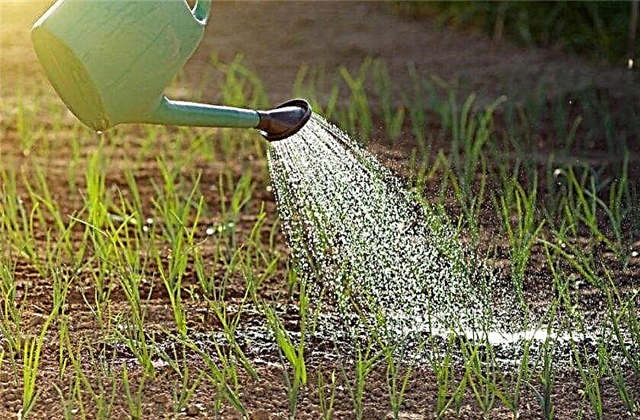 In conditions of moderately arid summer, such procedures can be carried out once every 2-3 weeks. About 3-4 weeks before harvesting, watering should be stopped completely, in this case, the taste characteristics of onions will be much better, and its shelf life will increase.
In conditions of moderately arid summer, such procedures can be carried out once every 2-3 weeks. About 3-4 weeks before harvesting, watering should be stopped completely, in this case, the taste characteristics of onions will be much better, and its shelf life will increase.
As for top dressing, they need early ripening culture only if the soil on the bed is depleted (with proper agricultural technology of fertilizers introduced before planting, the hybrid will be enough for 3–3.5 months of vegetation). Before fertilizing, the bed must be watered. During the growing season, you can carry out up to two Cupido F1 top dressings according to this scheme:
During the growing season, you can carry out up to two Cupido F1 top dressings according to this scheme:
| Application Time | Type of fertilizer and dosage per 1 sq.m |
| Third decade of May | ammonium nitrate - 10-15 g |
| The second decade of June | potassium salt - 10-15 g |
Important! Nitrogen fertilizers on the onion bed are applied in the case of growing crops on the feather, if you want to get turnips, they are not needed.
Soil cultivation and weeding
It is impossible to grow a good onion crop without regular and thorough weed removal. It is easiest to deal with weeds with the help of loosening, which, in addition, will ensure the preservation of moisture and normal air exchange in the soil. For loosening, it is recommended to use a special tool - a manual cat-hoe, the teeth of which should be well cleaned and disinfected before starting work.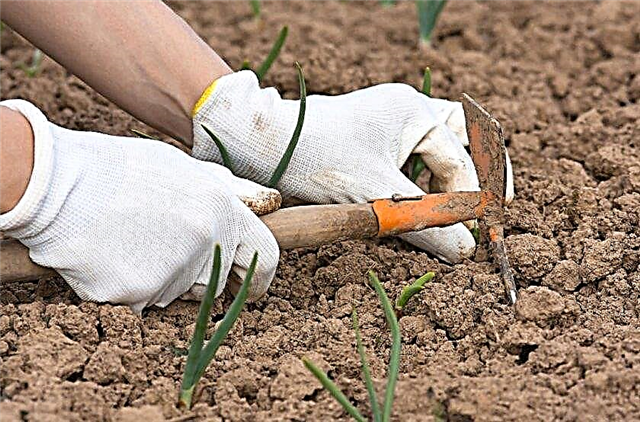 However, in order for the work to be effective, it must be performed constantly, at least once a week, preventing the emerging weeds from forming a branched root system. The optimal depth of cultivation should be from 4 to 6 cm. Mulching the soil can help to relieve the need for continuous cultivation and weeding.
However, in order for the work to be effective, it must be performed constantly, at least once a week, preventing the emerging weeds from forming a branched root system. The optimal depth of cultivation should be from 4 to 6 cm. Mulching the soil can help to relieve the need for continuous cultivation and weeding.
Important! In the process of loosening, it is impossible to prevent the noses of the sevka from falling asleep with earth, since in this case the onion stops growth.
Pest and Disease Prevention
As it was said, Cupido F1 has excellent immunity, and, subject to the rules of agricultural technology (primarily with regard to irrigation and top dressing), it is practically not affected by fungal and other diseases. Most pests are not afraid of culture, except, perhaps, an onion fly, and to be more precise, its voracious larvae.
An onion fly is an insect similar to an ordinary housefly, laying larvae directly on the sowing sticking out of the ground, hiding them between the scales. During the season, 2-3 generations of this pest can attack the culture. You can fight the parasite with the help of potent insecticides, such as, for example, "Flies", "Aktara", "Alatar" or "Sochva". However, such remedies are not very suitable for gardeners who care about the environmental cleanliness of the vegetables they grow. It is much wiser to take care of the safety of the beds in advance.
You can fight the parasite with the help of potent insecticides, such as, for example, "Flies", "Aktara", "Alatar" or "Sochva". However, such remedies are not very suitable for gardeners who care about the environmental cleanliness of the vegetables they grow. It is much wiser to take care of the safety of the beds in advance.
It gives a good effect, mulching the beds with peat, as well as “dusting” the earth with sticking nods sticking out of it with wood ash, can be mixed with shag or tobacco, layout around the plantings of shredded wormwood, burning pepper.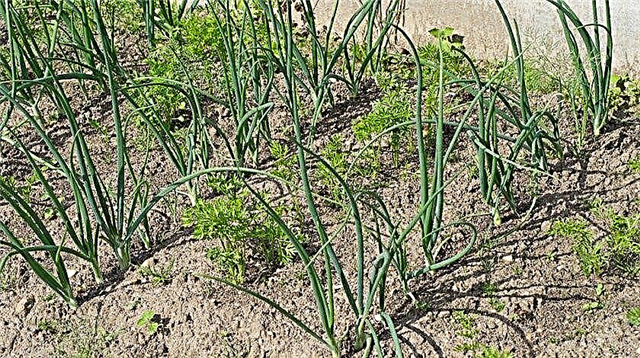 In order to scare away the flies, you can plant onions next to carrots, its insect simply does not tolerate its smell. Calendula, marigolds and other fragrant plants can perform the same function.
In order to scare away the flies, you can plant onions next to carrots, its insect simply does not tolerate its smell. Calendula, marigolds and other fragrant plants can perform the same function.
Harvesting and storage
Cupido F1 is an onion of long storage, however, in order for the reserves to lie until the end of winter and not lose their qualities, the crop must be correctly harvested and prepared. Therefore, there are a number of important rules regarding this:
- As soon as the tips of the feathers begin to dry out (usually this happens already in mid-July), the bush needs to be slightly opened and gently pulled up, tearing part of the roots. This contributes to a better ripening turnip.
- Harvesting begins after the feather dries and lays on the ground. For Cupid, this period begins in late July or early August. Full drying of the aerial parts should not be expected, you can start cleaning after waiting for about a third of the tops to be on the ground.
- You need to remove the turnip from the ground with a shovel or a special staple, but in no case try to pull it out with your hands.
- Digging is carried out gradually, first every second plant from the row, then removing turnips through one, etc. The final collection is carried out when the whole aerial part is completely dry.
- After extracting the onion from the ground, it should be left in a dry and ventilated place for 5-7 days - completely dry. If the days are dry, you can leave the crop right in the garden.
- After drying, the dry top must be kneaded and separated from the turnip. Those specimens in which the neck remains thick are not suitable for long-term storage, therefore they should be selected for immediate use.
- Next, re-drying follows. It lasts another week, but is carried out at a higher temperature - not less than + 30 ... + 35 ° C. So that the onion does not "suffocate", the room should be well ventilated.
- Onions prepared in this way can be laid for long-term storage in the basement, cellar, attic (optimal temperature range is + 5 ... + 7 ° С). It is best to put vegetables in baskets or wooden crates with a low layer, you can "braid turnips in braids" and store them in a suspended form.
 More recently, having appeared on the Russian and Ukrainian markets, the Dutch onion set Cupid F1 has already gained popularity among many gardeners, moreover, it is equally highly appreciated by professional farmers and owners of personal household plots.
More recently, having appeared on the Russian and Ukrainian markets, the Dutch onion set Cupid F1 has already gained popularity among many gardeners, moreover, it is equally highly appreciated by professional farmers and owners of personal household plots.The plant perfectly adapts to different climatic conditions, does not require much attention, is almost not affected by diseases and pests, can be grown in almost any of the possible ways, gives a stably rich crop with excellent keeping quality. To top it all, the taste characteristics of this onion are able to appreciate even the most picky gourmet.

